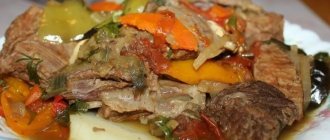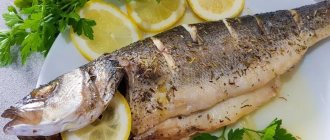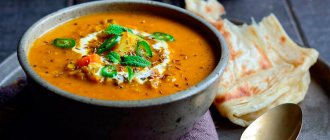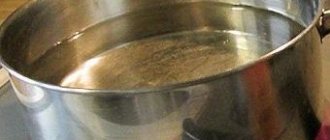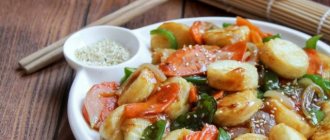The birthplace of curry cooking, as everyone knows, was the country of India. At the end of the 18th century, the British brought curry recipes from India to England, and from England curry spread throughout the world. In the late 19th century, curry dishes first came to Japan and were introduced there as elements of British cuisine. In those days, dishes containing curry were considered a luxury, and not everyone could afford to cook it. But little by little, a new taste of herds still appears in ordinary restaurants, homes and small towns.
The dish had two names, the first - raisu kare and the second - kare raisu. The rice curry recipe was born in the tenth years of the twentieth century, and since then its recipe has remained virtually unchanged. Curry sauce contains much more vegetables than meat itself, is heavily thickened with flour, and should be served exclusively on top of rice.
During times of war, curry rice was a military dish as it is very nutritious and filling and can be prepared in large quantities in minutes. Rice and curry became a common home dish after the Second World War, thanks to the creation of a mixture of flour and curry spice that could be used for quick cooking. Everything became very simple - all you had to do was fry the ingredients you needed, add water, boil over low heat and put one tile of the semi-finished product in the water, let it dissolve in the water and the whole dish is ready.
Curry rice became cheap and easy to prepare, which explains why the dish became a staple in the home diet and so famous.
But curry with rice is not only served in home settings, it can also be found in commercial areas. Any restaurant offers it on its menu, many noodle shops offer kare-udon - wheat noodles seasoned with curry, or rice in mackerel curry broth, and most bread stores sell kare-pan - buns inside with curry sauce.
Absolutely everywhere, if you wish, you can purchase a ready-made mixture of Japanese curry, or prepare it yourself. There are foods in Japan that have achieved the same level of adoration and respect as kimchi in Korea or fried fish in the UK. And this, of course, is curry. According to statistics, consumption per person in Japan of semi-finished curry is much higher than traditional Japanese cuisine.
The Japanese consume curry more than once a week, and statistics show that curry is a perennial favorite among the younger Japanese population.
Most often, the Japanese eat curry with rice. Rice with curry is usually served not only in flat dishes, but also in broth bowls. If desired, sprinkle the rice with sauce in any quantity. For this dish, it is recommended to use sticky and short Japanese rice, which has a slightly sweet taste. The dish is mostly eaten with a spoon due to its liquid consistency.
Equally popular are dishes such as:
- Kare-pan - a fried bun filled with curry sauce;
- Katsu-kare - pork cutlet, perfectly deep-fried with curry sauce and rice;
- Kare-udon is a soup made from noodles and flavored with curry.
Beef cutlets with curry are no less in demand; such a dish cannot be found in India. Such differences in recipes are due to the fact that the Japanese learned about curry from the British, and not from the Indians.
People who practiced mixing spices found Indian curry to be very complex. The English curry recipe consisted of basic Indian spices such as masala and garam. And it made curry very easy to prepare, and a little later it began to appear in Japan with many other products from the West. The Japanese were much more kind to this seasoning than to other English products. Many meat dishes were not too familiar to the Japanese, as their Buddhist faith did not support eating animals. The English rare steak did not delight the Japanese, but they liked the beef hidden in the curry sauce. Moreover, the Japanese loved spices. Everywhere in Asia, spices appeared in any medicine.
But still, the Japanese preferred curry sauce with their national product. They were sure that this seasoning was truly European, and at first they served it exclusively in European restaurants. Over time, as a result of adaptations to their tastes and various experiments, the Japanese developed a recipe for their own modern curry.
The modern recipe looks like this:
Flour, vegetable oil and curry powder, along with other ingredients, are fried to make a roux that is usually added to vegetables and stewed meats. Then simmer everything together over low heat until the sauce thickens. Potatoes began to be added to the dish after rice crop failures in some areas of Japan.
Option #1 – Japanese curry sauce
Ingredients for the sauce:
- Tonkatsu or Worcestershire sauce three tablespoons;
- One hundred grams of butter;
- Curry twenty grams;
- Flour fifty grams;
- Ketchup forty ml;
- Twenty grams of garam masala.
For the main dish:
- Four hundred grams of chicken fillet;
- One onion;
- Two large carrots;
- Two potatoes;
- One apple;
- A piece of ginger;
- One large clove of garlic;
- Broth one liter;
- Spices;
- Salt pepper.
The Japanese curry recipe requires the following ingredients: butter, ketchup, curry, flour, sauce, garam masala. Place everything in a large saucepan, mix thoroughly, the result should be a dense, homogeneous mass.
For the main dish, you need to chop the onion very coarsely, and cut the rest into small cubes.
Fry the meat, onions, carrots, pour in the broth and leave for ten minutes. Add potatoes and finely grated apple and cook over low heat until the potatoes are ready. Add the sauce, mix everything thoroughly and cook until the required thickness.
Curry can be added to absolutely all dishes: any vegetables, meat, fish, seafood, pasta, rice, sauces. Curry is rightfully considered the most versatile seasoning.
Nutritional information of curry sauce
The nutritional value of classic curry sauce is 183 kilocalories per 100 grams, which makes it a dietary dish that can be consumed for gradual and healthy weight loss.
The beneficial properties of curry sauce are explained by the huge amount of spices included in its composition. The most important and dominant spice in this sauce is turmeric, which has long been famous for its benefits to the body. It contains many antioxidants that restore the normal functioning of all body systems and also has an antitumor effect. In India, turmeric is used as a herbal antibiotic as it kills harmful bacteria and viruses. For this reason, it is added to all Indian dishes, because everyone knows that there is a high risk of infectious diseases due to non-compliance with sanitary standards. Turmeric gives curry sauce a warm golden color and bright aroma, but it needs to be fried a little first to “unleash” the aroma.
In addition to turmeric, a lot of red hot pepper is added to the curry sauce, which gives this sauce a very spicy taste. Red hot peppers are famous for their ability to speed up metabolism, burn fat and improve digestion, making it an essential spice for those who want to lose weight without much effort. Also, fresh ginger root is always added to the curry sauce, which is a real record holder for the content of antioxidants and nutrients. Ginger improves immunity, improves the functioning of the gastrointestinal tract, accelerates the process of burning calories, gives vigor and serves as an excellent prevention of cancer. In addition, ginger gives all dishes a wonderful aroma and a slight spice that goes perfectly with meat, fish or poultry. In addition to these healthy and aromatic spices, curry leaves, fenugreek and mustard seeds are always added to the curry sauce. In the East, all these spices are also necessarily fried - this is how they “reveal” their aroma and lose their bitterness.
The base of the curry sauce is coconut milk, which must be added to give the sauce a delicate aroma and nutrition. Nutritionists often recommend drinking coconut milk for those who are obese, as it is low in calories, yet highly filling and gives a lot of energy. In addition, it contains many unsaturated omega-3 fatty acids, which are very important for the elasticity of cell membranes and normal lipid metabolism. Coconut milk is rich in plant protein, vitamins, minerals and antioxidants. It does not cause allergic reactions and absolutely everyone can use it without any harm to health and figure.
Option number 2 - preparing Japanese curry
Ingredients for making curry mixture;
- Butter forty grams;
- Flour forty grams;
- Curry powder twenty grams;
- Garam masala spice mixture twenty grams;
- Ketchup forty grams;
- Tonkatsu sauce fifty grams.
Products for the main course:
- One large onion;
- Two medium carrots;
- Two large potatoes;
- Five hundred grams of meat, you can have chicken, pork or beef;
- One apple;
- Garlic;
- Water eight hundred ml;
- One cube of broth - you can use Magi or Knor;
- Ten grams of garam masala;
- Black pepper, salt;
Cooking process
- Heat a saucepan with a couple of tablespoons of oil. Chop the onion as you like; if at the end of cooking you want the onion to be felt in the overall mixture of vegetables, then you need to chop it very coarsely and fry until transparent. While the onion is frying, finely chop the garlic and add to the onion. Cut the meat into two by two cubes, add to the prepared onion and mix thoroughly. Fry the meat until it is no longer pink.
- As soon as the meat is browned, add finely grated carrots and fry for five minutes. Then fill everything with water, add broth and leave to simmer over low heat. After boiling, skim off the foam and cook for another ten minutes.
- Now you need to start preparing the curry.
- Melt butter in a saucepan, add flour and mix thoroughly. Fry until golden brown. Add garam masala, curry powder, tonkatsu sauce, ketchup, and stir until the mixture becomes elastic and smooth.
- Let's return to the main course.
- Cut the potatoes into large cubes and add to the pan. Next, grate the apple and add a spoonful of garam masala.
- Continue cooking until the meat and vegetables are ready. When everything is ready, season the dish with the curry mixture that we prepared and mix thoroughly until completely dissolved.
- Cook for a few minutes until the sauce thickens.
The dish is ready, serve with noodles or rice.
What is curry and what is it eaten with?
Curry is not only an Indian mixture of spices, but also a dish whose characteristic element is a thick, aromatic sauce of medium heat. Outwardly, it looks like goulash or stew. Most of the dishes that are prepared in India can be classified as food with a similar name.
This is a whole group of various dishes, seasoned with a mixture of spices called curry. All Indian curries: meat, chicken, fish, vegetables, vegetarian with tofu and beans are always something aromatic, spicy, moderately thick, sometimes spicy, usually yellowish-orange in color.
To try this famous Indian dish, you don’t have to go to a restaurant; the aromatic dish can be prepared at home. Such dishes are prepared very hot and spicy. But options that are neutral in severity are possible. The basis is meat, fish or vegetables and seasoning.
Features of Indian cuisine
The most popular in Indian cuisine is a mixture of spices: “Curry”, “Garam Masala”, as well as separately: saffron, cloves, ginger, cumin, nutmeg, mango powder, various peppers.
Indians use a lot of rice, wheat, beans, vegetables and fruits in preparing dishes. The cow in India is a sacred animal, so Indian dishes are prepared from poultry or lamb. In Indian cuisine, most foods are fried in hot oil.
Traditionally, Indian food is served to guests on a special tray - Thali, in metal bowls - katori. However, in most cases, Hindus prefer a large banana leaf to ordinary utensils.
Thali is also the most loved food in India. It consists of several independent dishes. Each region has its own rules for serving thali. However, rice, dhal (bean soup), and curry are considered unchanged ingredients.
A bowl of cold water is usually provided with the meal to wash down the spicy food. Many dishes in India are eaten with the hands or wrapped in fresh bread cakes, without the use of regular cutlery.
Before eating and between serving different dishes, it is customary to wash your hands in a bowl of warm water and lemon juice. There is no conversation while eating.
If you are planning a trip to India, be sure to enjoy the peculiarities of the local cuisine, try the dishes that I will present below, they will make it easier for you to understand what curry is.
- Tikka Masala - chicken pieces in spicy sauce;
- Dhal - thick creamy soup made from chickpeas or beans in coconut milk with the addition of curry and vegetables;
- Rogan Josh – lamb in curry sauce;
- Biryani is a main dish consisting of meat, rice and a mixture of vegetables, seasoned with a spicy orange sauce;
- Dahi maach - fish dish with curry, seasoned with yogurt;
- Malai Kofta - the dish is deep-fried balls of potatoes and paneer;
- Tandoori - tender chicken, specially marinated and baked in an Indian oven;
- Guntaba – spicy meatballs with yogurt-based sauce;
- Mailai - shrimp in a curry sauce based on coconut milk;
- Pani Puri - a snack in the form of crispy puri balls with a variety of spicy fillings;
- Chapati is the national Indian thin bread.
Varieties of curry
There are many variations of Indian Curry. In addition to meat or chicken, you can cook fish, shrimp, vegetables, and beans in this way. The spices and coconut milk are what give it its special taste. If you can’t find milk, you can try replacing it with natural yogurt and vegetable broth.
Dhansak is a sweet and spicy dish, which is considered to have originated in Iran, but thanks to its original, incomparable taste, dhansak has become very popular among ordinary Indians. Dhansak is always served with rice, so it is a type of pilaf.
According to the original recipe, dhansak is always prepared using mutton with the addition of vegetables and red lentils or channa dal. In modern India, it is also customary to prepare vegetarian (vegetable) dhansak. The pungency of taste can vary by changing the amount of chili pepper.
Sambar has a spicy taste and is made with pulses, just like Dhansak. The main difference between these two dishes is that Sambar is never prepared with added sugar. Otherwise, the recipes and preparation technology are approximately the same.
The food has a milder taste. This is often achieved by adding a large amount of coconut milk or cream to the feed and boiling it to a thick consistency. The korma has a slightly sweet taste, which is obtained due to the addition of cardamom.
Madras curry is a South Indian variant that is distinguished by its spiciness and the large amount of tomatoes used in its preparation. In fact, there are many variations of Madras curry.
Any type of Indian curry can be made into Madras curry only by adding more spices and tomatoes. It is because of this that Madras curry turns out darker, richer in color, with a sharper, more pronounced taste
Pasanda is a mild (non-spicy) variety, made from small pieces of lamb pre-marinated in sauce or yogurt. Also, nuts (almonds) are often added to the dish, which is why in restaurants this option can be found under the name badam pasanda (that is, pasanda with almonds). The restaurant version of pasanda is relatively mild, with a small amount of chili, as well as the addition of cream to soften the taste.
Saag is a not too spicy variety that requires the mandatory use of spinach leaves, mustard and/or fenugreek. If only spinach (without fenugreek) is used in cooking, then the dish is called “Palak”. The most popular version is Saag gosht (with meat) and Palak Paneer (with cheese).
Tikka - has a rich, complex taste with the addition of sour and sweet notes due to the use of tamarind and sugar. Also, preparing tikka masala often involves using meat or chicken, previously marinated and grilled (tikka), as its base.
Vindaloo is very spicy, its homeland is South India. Vindaloo is prepared using a lot of black pepper, lemon, garlic and chili. It is believed that the original recipe for its preparation was brought to India by the Portuguese and they prepared it on the basis of red wine and garlic (“wine” - from the word wine, vine or wine, and alhos - garlic).
However, over time, the Indians adapted Vindaloo to suit themselves, adding chili, pepper and other spices to it, and replacing the wine with lemon juice. The basis for Vindaloo can be either chicken or lamb.
Chicken curry: recipe
A classic Indian curry recipe - chicken with rice in spicy sauce. Chicken with spicy sauce will not only be a real decoration for the holiday table, but also suitable for everyday meals. To prepare spicy chicken, you can use any part of it: breast, thigh, drumstick.
This recipe will offer an option for making curry with chicken breast. For the cooking process you will need the following ingredients:
- chicken breast – 500 gr., 105 rub.;
- onions – 3 pcs., 15 rubles;
- garlic – 3 cloves, 5 rubles;
- curry powder – 10 gr., 12 rubles;
- ground ginger (you can use fresh) – 50 gr., 55 rub.;
- half a lemon, 20 rubles;
- ground black pepper – 10 gr., 6 rub.;
- rice – 300 gr., 30 rub.;
- salt - to taste;
- total: approximate cost of ingredients - 248 rubles.
Finely chop the garlic or grate it, then transfer the resulting mass to a pre-prepared bowl; it is better to use a large one, since the process of marinating the chicken will take place in it. If fresh ginger root is used, it should be finely chopped and added to the garlic.
Add the rest of the spices with salt (except garam masala), vegetable oil, squeeze out lemon juice. Mix the resulting mass. Cut the chicken breast into medium-sized pieces and place in a bowl with the seasoning. Rub this mixture into the chicken and let it sit for 15 minutes.
Grind 2 onions using a blender until smooth; if you don’t have a blender, you can grate them on a fine grater. Cut the remaining onion into rings. Fry onion and garlic in a frying pan in oil.
Place the chicken fillet along with the marinade into a frying pan, add a little water, cover with a lid and simmer for 15-20 minutes until cooked. For the last 10 minutes of cooking, remove the lid to allow the liquid to evaporate a little.
At the very end, add garam masala, cover with a lid and let stand without heat for 5 minutes. The finished dish can be served as a side dish with boiled rice, potatoes or stewed vegetables.
Recipe No. 3 – Cooking rice with Japanese curry in a slow cooker
Curry is a very famous Indian seasoning that is widely used throughout the world, especially in Japan. It contains several types of herbs; this seasoning goes best with rice; it gives the finished dish a special originality and piquancy.
Products for cooking:
- Long grain rice three hundred grams;
- Water three hundred ml;
- Two carrots;
- One large onion;
- Garlic two large cloves;
- Curry powder ten grams;
- Olive oil twenty ml;
- Spices at your discretion.
Curry sauce
Each dish should have a special, unique property, a combination that makes it unique. One of the techniques to achieve this effect is the use of sauces. Under their influence, the tastes of food components are revealed, and identical products are perceived in completely different ways.
We want to tell you about a dressing with oriental roots - curry, which goes amazingly with poultry, vegetables and some types of legumes. Its homeland is India. It received further development and changes from English cooks.
It may contain up to thirty components. It is believed that it prevents cell aging, the appearance and development of cancer, due to the presence of antioxidants. The quantity and composition of seasonings largely depends on the discretion and preferences of the cook, so you won’t see sauces that are the same in color and taste from different chefs.
We liked the curry sauce, the recipe for which we offer you, the most, thanks to its absolutely balanced taste, availability of ingredients and easy preparation method.
Ingredients
Portions: –+6
- Water 1 tbsp
- Tomato 6 pcs
- Vegetable oil 5 tbsp
- Ginger 30 gr
- Mustard seeds 2 tsp
- Chili pepper 3 pcs
- Onions 3 pcs
- Coconut milk 1 can
- Curry leaves 1 bunch.
- Turmeric 1 tsp
- Fenugreek 1 tsp
- Salt 1 tsp
- Paprika
Steps
30 min.Video recipePrint
- For cooking, it is best to use a small saucepan. Place it on the stove and heat it at low temperature, pour in vegetable oil, add mustard seeds, fenugreek and a few curry leaves.
- Prepare hot peppers. Use medical gloves to protect the skin of your hands. Wash the fruits and cut them in half lengthwise. Remove seeds and stem. Rinse again under cool running water. Pat dry with a paper towel and cut into thin strips.
- Peel the fresh ginger root and grate it on a fine grater.
- Place the chili and ginger paste with the rest of the spices and mix.
- Peel the onions and chop into small cubes. Add to the mixture along with paprika and turmeric.
- Remove the skin from the tomato. This will be easier to do if you place them in boiling water for 1 - 2 minutes, after making two cuts in the shape of a cross on the top, as if dividing the tomato into four parts. Then grind. You can use a blender or food processor for this. Add the tomato pulp to the frying pan and stir.
- Pour in a glass of water and add salt. Then add coconut milk. Cook for about five minutes over low heat. Don't forget to stir.
- You can pour hot sauce over rice, chicken or meat.
- For subsequent use, it should be cooled and placed in the refrigerator, where it can be perfectly stored for two days.
Bon appetit!
Cooking steps
Rinse the rice thoroughly and soak for a while in cold water. Peel the vegetables, grate the carrots on a coarse grater. Coarsely chop the onion and chop the garlic.
Turn on the multicooker in the “frying” mode, pour a small amount of olive oil into it, add garlic and fry, stirring regularly, for one minute. Next, add carrots, onions, sprinkle all the curry and sauté for about three minutes until golden brown. Then add the rice, mix everything thoroughly, pour boiling water over it, pour to taste and bring to a boil, close the multicooker lid and cook the curry with rice in the “stew” mode for twenty-five minutes. Once ready, place on plates and serve with any vegetable salad.
Recipe No. 4 – cooking chicken with Japanese curry and rice
Ingredients for cooking:
- Chicken fillet six hundred grams;
- Olive oil twenty ml;
- One large onion;
- Two potatoes;
- Tomato paste twenty grams;
- One carrot;
- Coconut milk one can;
- Long grain rice three hundred grams;
- Salt, pepper, spices to your taste.
Ingredients for making the sauce:
- Turmeric at your discretion;
- One onion;
- Curry leaves and seeds;
- Ginger;
- Chili powder;
- One tomato.
Cooking steps
Finely chop the onion and chop the garlic. In a large frying pan, heat the olive oil, fry the garlic and onion over low heat until translucent, four minutes.
We clean the meat from films, cut into thin strips, place in a frying pan, add flour and curry, set the heat to maximum and fry for three minutes.
Pour in the cream, mix thoroughly, bring to a boil, then simmer over low heat for seven minutes, stirring regularly. Add finely chopped cilantro, salt and pepper. If you don't like cilantro, you can replace it with parsley.
According to the instructions, cook the rice noodles and place the meat in the center of the noodles. And we can begin.
Curry sauce. Recipe
Spice mixtures are very popular today. And they came to European cooking from Asian countries, where the culture of using various spices developed over many centuries. One of the traditional spicy mixtures that came to us from India is curry.
The base of curry powder is curry leaf and dried turmeric root. It is these two components that make up the main part of the seasoning. The constant components of this mixture are also fengurek, coriander and red pepper. Other components may vary. In some cases, curry powder can contain up to 30 components, but on average there are about 12.
Curry goes best with rice, goes great with meat dishes, and best with poultry. Curry powder adds a spicy flavor to dishes. In addition, based on this mixture of seasonings, a delicious sauce is prepared, which bears the same name - curry. How to make curry sauce? There are several different recipes.
Curry sauce. Recipe one: with vegetable oil
To prepare the sauce for this recipe, you need the bare minimum of ingredients: a tablespoon of curry powder, 2 tablespoons of flour, garlic, 100 ml of olive oil, a third of a glass of water, tarragon, basil, chili, rosemary to taste.
Pour a third of the oil into a frying pan, add a spoonful of flour, a spoonful of curry, stir until a paste forms, then add the rest of the seasonings. Now pour the rest of the oil into the pan and add another spoonful of flour.
Now add water and stir so that there are no lumps. The sauce should thicken. After this, remove the pan from the heat and add chopped garlic and chili to the sauce. If the sauce is too thick, you can dilute it with water.
Curry sauce. Recipe two: with meat broth
For the sauce you will need a medium-sized onion, a few cloves of garlic, 2 tablespoons of curry powder, the same amount of cream, olive oil, about 4 tablespoons, a spoonful of flour, a glass of meat broth, a small apple, a teaspoon each of mustard and lemon juice.
Fry chopped onions and garlic in olive oil on low power, then add flour and simmer for another 2 minutes. Then remove the pan from the heat and add the meat broth to the onions and garlic, then the curry. After all ingredients are mixed, bring the sauce to a boil and cook for 5 minutes. After this, add grated apple, lemon juice and mustard, and pour in cream at the very end. Serve the sauce hot.
Curry sauce. Recipe three: how to make your own mixture
For this sauce, you need to prepare vegetable oil in advance, at least 5 spoons, mustard seeds, 2 teaspoons, a spoon of fenugreek seeds, 3 green chilies, a handful of curry leaves, 2 pieces of ginger root, 3 medium onions, a spoon of chili powder, turmeric, 6 tomatoes, a can of coconut milk.
The biggest challenge in making this sauce is finding the curry leaves. Unfortunately, they are not sold in regular stores. Perhaps they can be found in specialized stores selling products for Vedic cuisine. If you can find them, it’s better to take as many as possible, with a reserve, so to speak.
Vegetable oil is poured into a frying pan, mustard seeds are added there. When they start clicking, add fenugreek seeds, crushed chillies, grated ginger and curry leaves. Fry the mixture for a few more minutes, then add the chopped onion, and when it becomes soft, add chili and turmeric, as well as chopped tomatoes, into the sauce.
After a few minutes, add 2 cups of water and coconut milk. Bring the sauce to a boil and cook for several minutes. The sauce is ready.
Chicken in curry sauce
For an example of dishes with this sauce, the article describes the preparation of chicken, which is complemented by curry sauce. The recipe for this dish does not require a ready-made sauce, but simply a powder added to already fried meat. To prevent lumps from forming, the sauce must be constantly stirred until it becomes homogeneous. The meat is stewed in the sauce for about 30 minutes. When the meat is ready, you need to add canned pineapples cut into pieces and one can. Rice is the best side dish for this dish.





